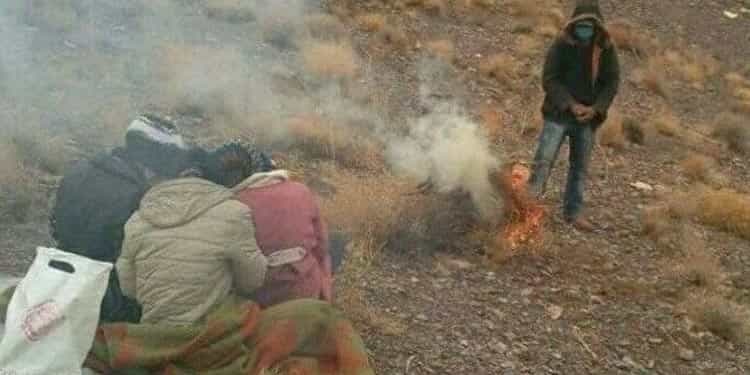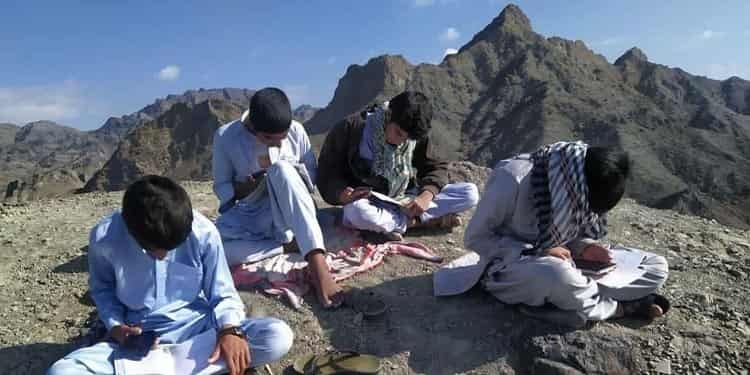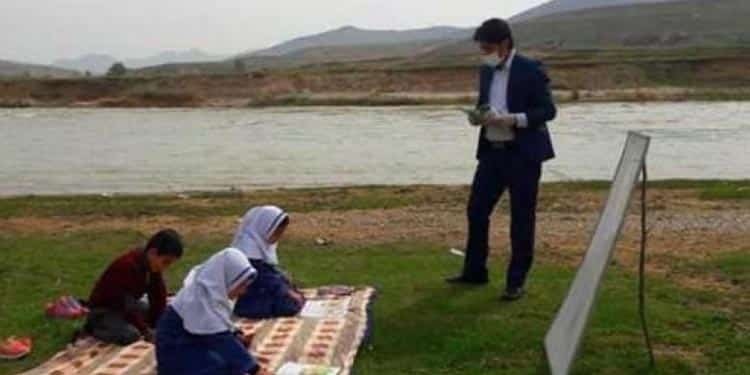In Iran, there are one million dropouts from schools, which is another dimension of the rampant poverty and government mismanagement. Currently, while the novel coronavirus has engulfed the country, a lack of education facilities and space, worn-out schools, and inappropriate infrastructure for online curriculum have pushed many students to leave school.
Many families, particularly working ones, cannot provide smartphones or proper devices for their children to educate. On the other hand, communication services’ weakness is another problem, and the government is unable to extend internet services to rural areas.
In outlying areas, students must climb mountains and risk their lives every day to access the internet. Minister of Welfare and Social Security Mohammad Shariatmadari officially announced that there are 147,000 dropouts, which is equivalent to 2 percent of Iranian students total.
However, there is a considerable difference between official and unofficial statistics. Institutions familiar with this social phenomenon estimate the real number of dropouts at several times the Welfare Ministry’s figure.
One Million Dropout Students
Director-general of Association for Protection of Children’s Rights Farshid Yazdani announced that there are around one million dropout students in Iran. “We believe that dropouts of education include all children between six to 18 years old. Therefore, there were around one million dropouts in the past education year,” Yazdani said.
“Around 2 percent of children do not go to schools due to residing in impassable areas and absolute poverty,” said Sociologist Shahla Kazamipour, adding, “All the while, not all students have access to adequate facilities for education. There are still around 500,000 illiterate children across the country.”
Students Lack Access to Government Education Application

Following the coronavirus outbreak, Iranian officials frequently advertise a state-run education application called Shad [happy] which ostensibly empowers students to attend classes remotely. However, the Ministry of Information and Communication Technology has not still been able to resolve technical obstacles to ensure students’ and teachers’ access.
Online Classes’ Conditions in Khuzestan Province, Southeastern Iran
In Khuzestan province, there are 153,000 students in around 40,000 families. The province faces severe problems in providing online services to residents, which deprived most students of online classes. Statistics show at least 13 percent of students have dropped out of education.
Provincial Governor Gholamreza Shariati raised the “lack of middle-schools in some villages” as one serious reason for the growing number of dropouts. “Of 27,000 students in Ramhormoz county, at least 4,000 students do not have mobile phones,” Chief of Education Department of Ramhormoz Rahim Rostami said.
In Palam Zangou village in the Sousan Izeh district, students have been deprived of a school and proper classes. They gather around the fire every day to heat themselves and receive education despite the severe cold. “A Conex has been offered to the village’s students, but its ground transfer is impossible,” a villager said.

Online Classes’ Conditions in Qazvin Province, Central Iran
Several villages in Auj county lack an internet network. Therefore, students have no access to online classes and are deprived of education. Several students climb mountains and hills to access the internet. However, they can no longer go to the tips during the cold season and have been forced to drop out of education.
Out of 100 villages in Auj county, 36 villages lack internet services. “23,000 students in Qazvin province are forced to drop out the education,” Chief of Provincial Education Department Hassan-Ali Asghari said in an interview with Mehr News Agency, adding, “233 villages have no access to the internet throughout the province.”
He believes that the shortage of school and education places are the main reason for dropping out of education in impoverished areas and slums. “Regardless of the shortage, around 23 percent of our schools across the province are worn-out and need rebuilding and reforming,” Asghari added.
Online Classes’ Conditions in Ardabil Province, Northwestern Iran
“Given the lack of adequate communication infrastructures, the students in 39 villages and 21 urban schools are deprived of access to Shad application,” said Governor of Kousar county Vahid Kan’ani. According to locals and students, Shad [happy] education network has turned into a Na-Shad [unhappy] service.
Online Classes’ Conditions in South Khorasan Province, Northeastern Iran
In many villages, including Hassan-Abad and Mohammad-Abad-e Zirkouh, there is no possibility to access the internet and Shad application, locals reported. “More than 300 schools in the province’s rural areas are deprived of internet connectivity,” announced Mohammad-Ali Vaghei, the director-general of the South Khorasan Education Department.
Online Classes’ Conditions in Kohgiluyeh and Boyer Ahmad Province, Southern Iran
According to the province’s Education Department, more than 3,625 students are educating in nomadic areas. “83 percent of nomad students have no internet access,” said Esmail Rezaei-Nik, the Education Department chief.
“According to the Education Ministry’s statistics, 3.5 million students cannot use Shad application because of lack of internet access or insufficient smartphones,” said member of the Parliament (Majlis) Education and Research Commission Mohammad-Reza Ahmadi.

Online Classes’ Conditions in Golestan Province, Northern Iran
Also, in the north of Iran, students do not have access to the Shad application in many rural areas. For instance, locals in Narli-Agi Sou are not able to achieve internet connectivity, let alone the education application, which requires a high-speed network.
“Students in Narli-Agi Sou village must climb mountains and hills in cold and rainy days to access the high-speed internet not to remain back of curriculum and other students,” a local said.
“Out of 1,885 elite students, 641 of them lack internet access, meaning 34 percent,” said the Chief of Elite Section of Education Department Abbas Khanali, adding, “Families’ incapable of purchasing mobiles and Tablets are the main reason for students’ inaccessible to Shad application.”
Online Classes’ Conditions in Kerman Province, Southeastern Iran
In Normashir county, the lack of communication infrastructure, poverty, and deprivation caused 30 percent of students not to access the Shad application in this region.
“We live in an area where internet connectivity is a problem. Many residents don’t even have a smartphone in their homes. In this county, families are crowded. In families, there is rarely a smartphone; all children cannot access the internet,” a resident said.
“Our children do not have proper facilities here. Especially, there is no internet network to connect the Shad application. To access the internet, children must go to other villages or climb high mountains and hills,” another resident said.
Conclusion
The education condition on the ground is far worse than what Iranian officials claim. The number of dropouts is severalfold the statistics provided by either the Education Ministry or Welfare and Social Security Ministry.
However, the growing dropout rate is merely one of many social phenomena in Iran. Given the ayatollahs’ mismanagement, Iranian citizens not only suffer from internet inaccessible, leading many students to drop out of education, but also their lives and health are seriously at risk due to the government’s failure in containing the health crisis.
Furthermore, unbridled poverty has pushed many families below the poverty line. Worse, poverty and lack of adequate internet connectivity have led numerous students to commit suicide. This is the flipside of the officials’ costly and irresponsible policies that squander national reserves to fuel terrorism and make nuclear weapons instead of refining and improving the country’s infrastructures.


